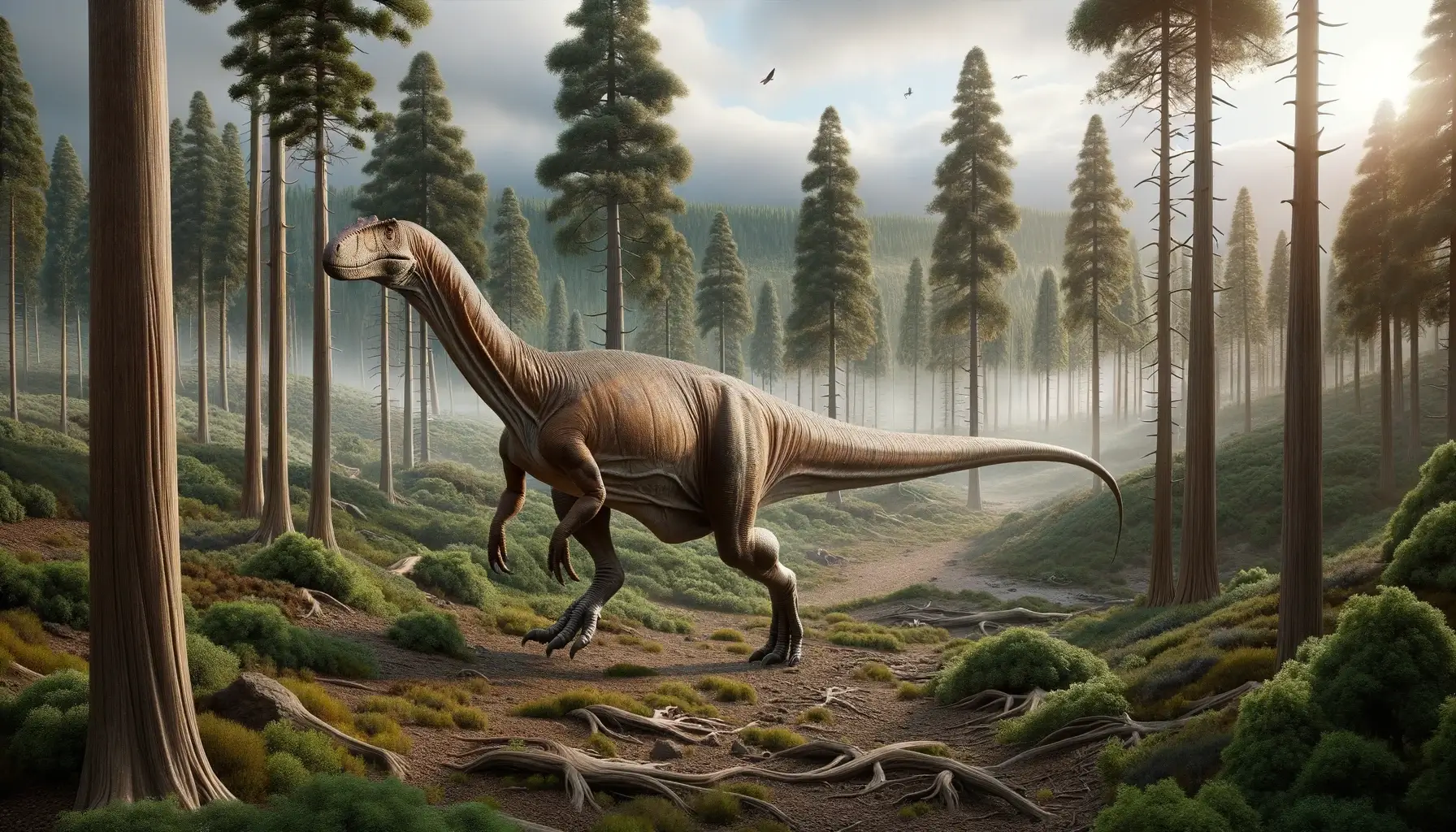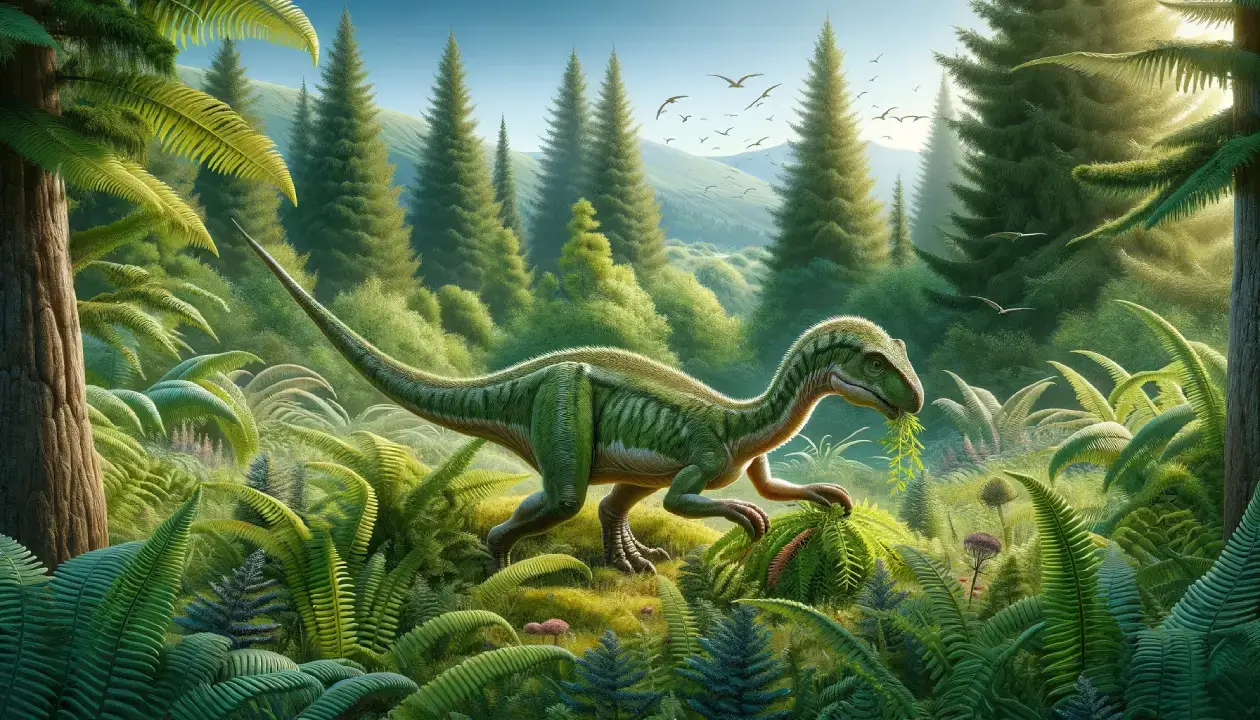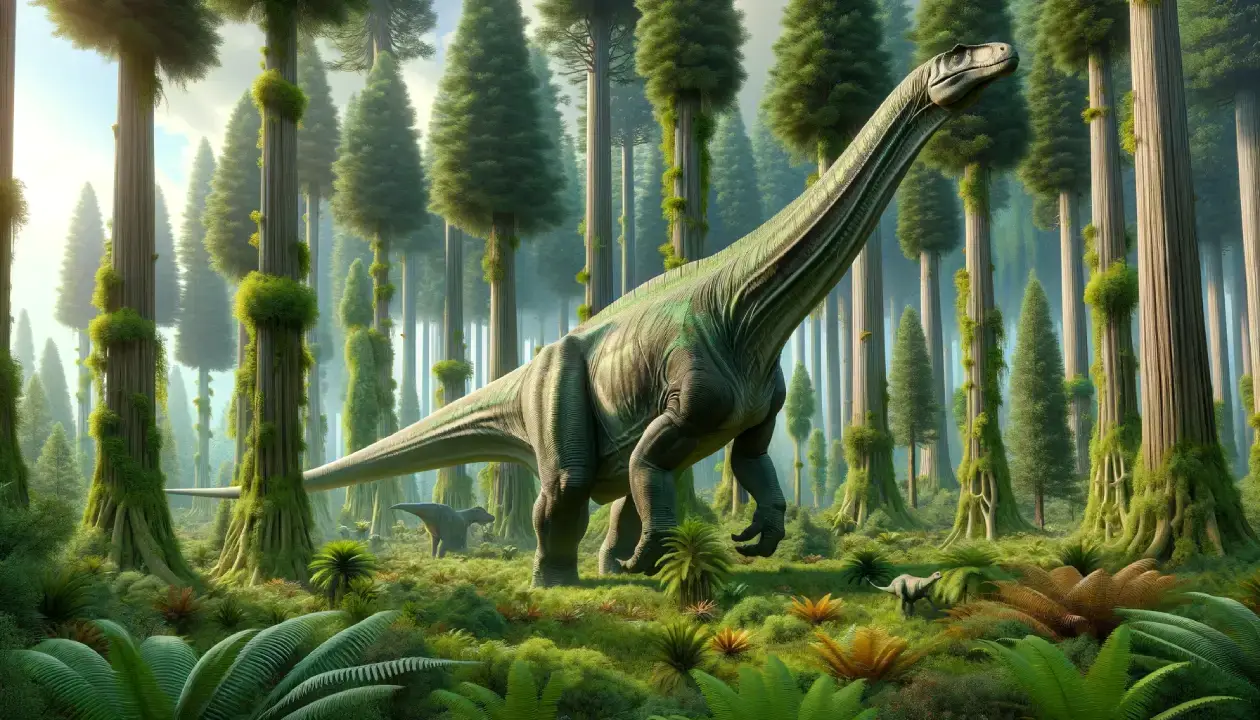Ammosaurus was a primitive sauropod dinosaur that lived in what is now North America during the Early Jurassic period, about 195 to 180 million years ago. It was one of the first dinosaurs to be discovered in the USA, and its name means “sand lizard”. It had a small head, a long tail, and leaf-shaped teeth that were well-adapted to their plant-based diet. It could walk on two or four legs, and may have been omnivorous.
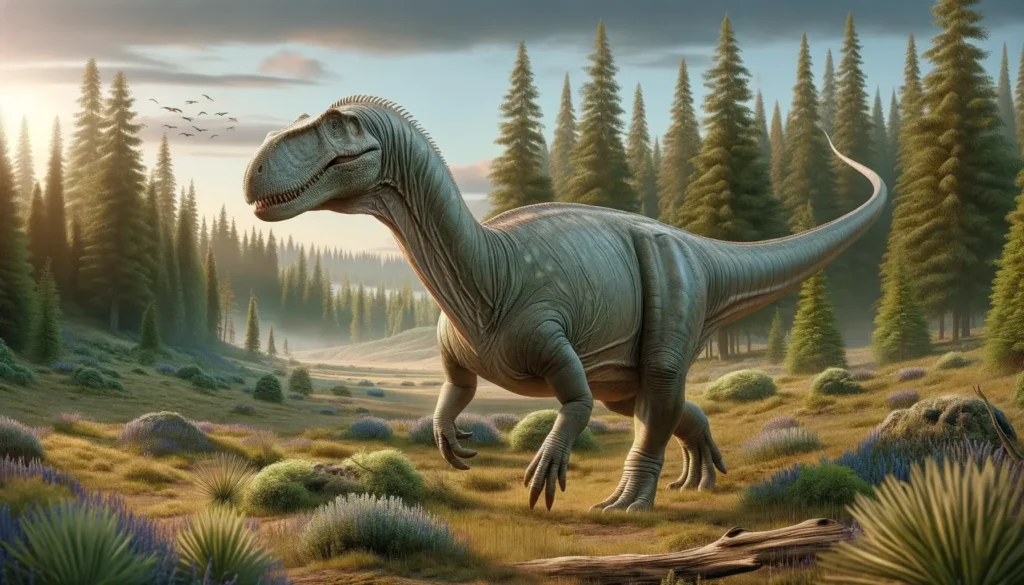
Basic Information
| Feature | Details |
| Time Period | Early Jurassic, 195-180 million years ago |
| Diet | Herbivorous |
| Length | 5.0 m (16.4 ft) |
| Weight | 300 kg (661 lbs) |
| Size | Small |
| Posture | Bipedal |
| Locations | USA (Arizona, Connecticut, Massachusetts) |
| Continent | North America |
| Type | Prosauropod |
| Habitats | Forest, Floodplain |
Description of Ammosaurus
Historical Context
Ammosaurus was one of the first dinosaurs to be discovered in North America. The first fossils were found in 1818 by Solomon Ellsworth Jr. while digging a well in East Windsor, Connecticut. However, he did not recognize them as dinosaur bones and thought they might belong to a human or a whale. Later, in 1855, another specimen was found by William Smith in Springfield, Massachusetts. He sent the bones to Edward Hitchcock Jr., a paleontologist and the son of the famous fossil footprint researcher Edward Hitchcock. Hitchcock Jr. named the dinosaur Megadactylus, meaning “”large finger””, because of its huge thumb claw. Unfortunately, this name was already used for another animal, so he had to change it to Amphisaurus, meaning “”double lizard””. But this name was also taken, so he finally settled on Ammosaurus, meaning “”sand lizard””, because the fossils were found in sandstone.
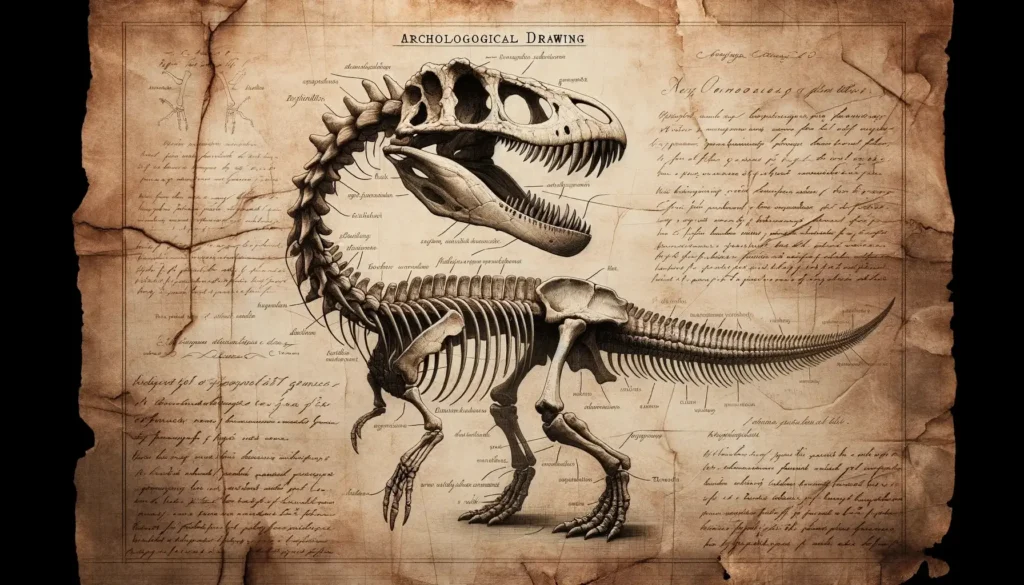
Physical Attributes
Ammosaurus was a small dinosaur that walked on two legs. It had a long neck and tail, and a slender body. Its head was small and narrow, with a pointed snout and leaf-shaped teeth for slicing plants. It had four fingers on each hand, with the innermost one being very large and curved. This thumb claw may have been used for defense or for digging up roots. It also had five toes on each foot, with the innermost one being smaller and raised off the ground.
Feeding Habits
Ammosaurus was a herbivore that ate low-growing plants such as ferns, cycads, and horsetails. It may have used its long neck to reach higher vegetation as well. It probably swallowed its food whole or with minimal chewing, and relied on gastroliths (stones in the stomach) to help grind up the plant matter.
Unique Features
Ammosaurus was one of the earliest members of the sauropodomorph group, which includes the giant long-necked dinosaurs like Apatosaurus and Brachiosaurus. However, unlike its later relatives, Ammosaurus was small and bipedal, and had a more flexible neck and tail. It also had a distinctive feature on its lower jaw: a large hole called the mandibular fenestra. This hole may have reduced the weight of the jaw or housed a gland or muscle.
Movement and Speed
Ammosaurus was a fast and agile dinosaur that could run on its hind legs. It may have used its tail as a counterbalance or for steering. It could also bend its neck and body sideways to avoid obstacles or predators. It is estimated that Ammosaurus could reach speeds of up to 30 km/h (18 mph).
Cultural Impact
Ammosaurus is not a very well-known dinosaur among the general public, but it has been featured in some books and documentaries about prehistoric life. For example, it appeared in the book The Dinosaur Heresies by Robert Bakker, and in the documentary Walking with Dinosaurs by BBC. It is also one of the dinosaurs that can be created in the video game Jurassic World Evolution.
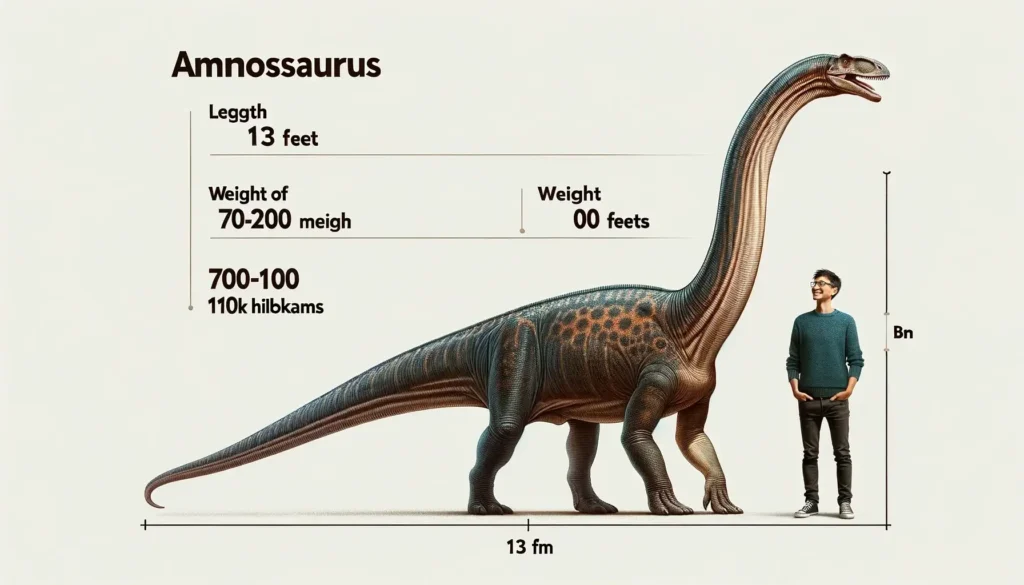
Interesting Facts
- Ammosaurus was originally named Megadactylus by Edward Hitchcock Jr., but he had to change it twice because both names were already used for other animals.
- Ammosaurus had a large hole in its lower jaw called the mandibular fenestra, which may have served various functions such as reducing weight or housing a gland or muscle.
- Ammosaurus was one of the earliest sauropodomorphs, the group that includes the giant long-necked dinosaurs like Apatosaurus and Brachiosaurus.
Related Dinosaurs
- Anchisaurus: A close relative of Ammosaurus that lived in the same time and place. It was slightly larger and had longer arms.
- Plateosaurus: A more advanced sauropodomorph that lived in Europe during the Late Triassic. It was much bigger than Ammosaurus and had stronger jaws.
- Massospondylus: A primitive sauropodomorph that lived in Africa and Asia during the Early Jurassic. It had a longer neck and tail than Ammosaurus and a distinctive hump on its back.

